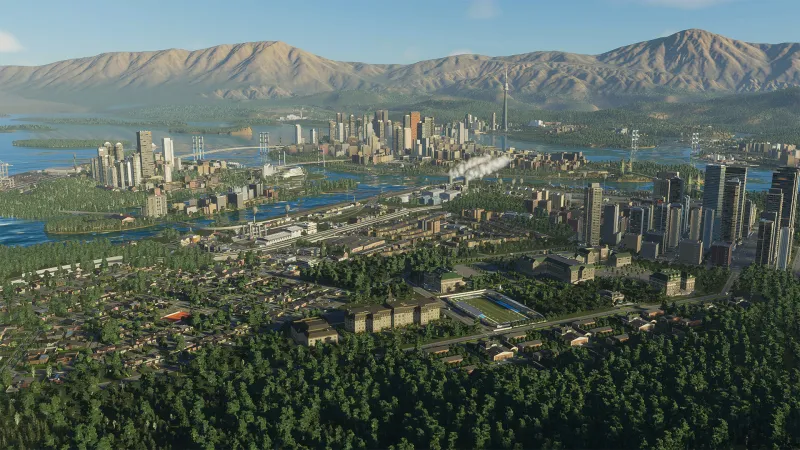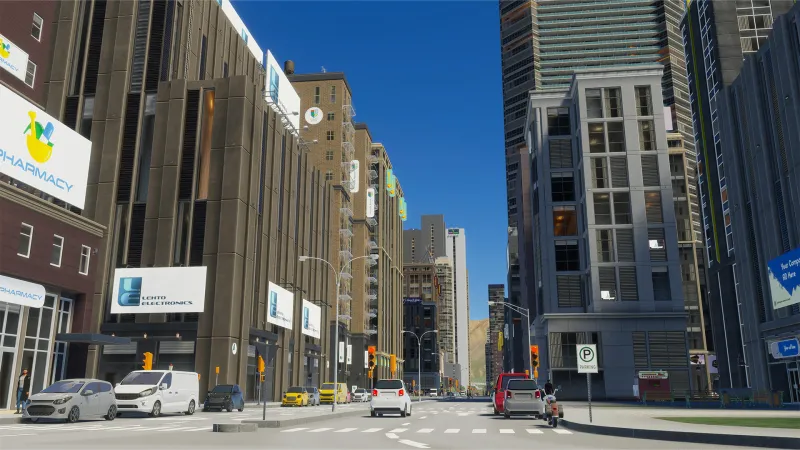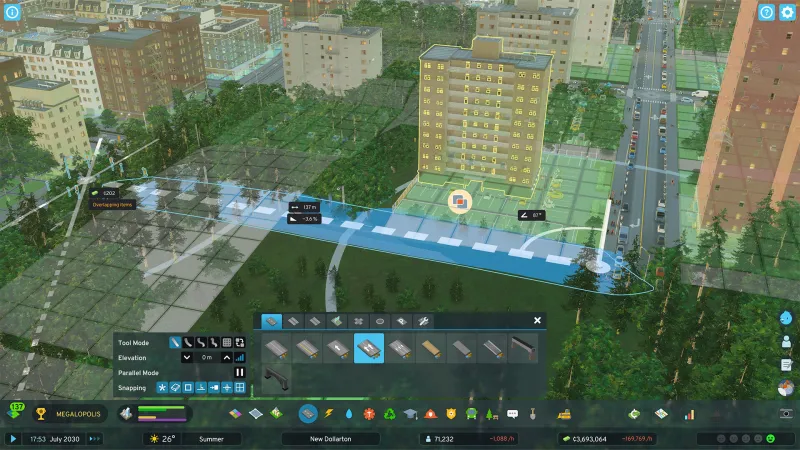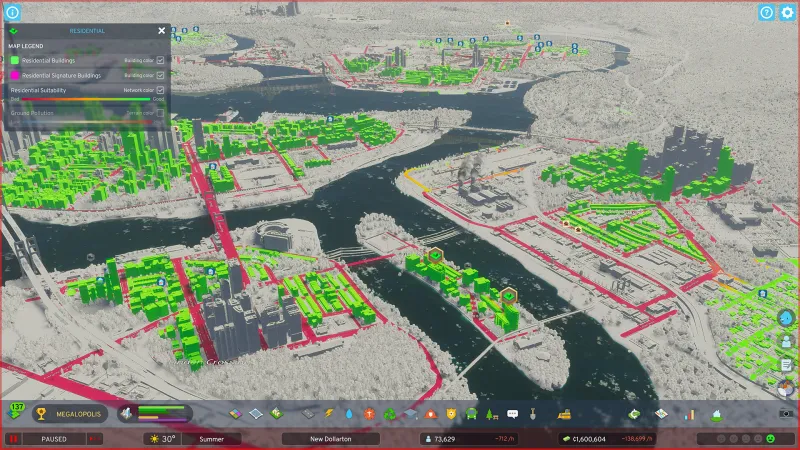
Reviewed on:
PC
Platform:
PlayStation 5, Xbox Series X/S, PC
Publisher:
Paradox Interactive
Developer:
Colossal Order
Release:
October 24, 2023
(PC), 2024 (PlayStation 5,
Xbox Series X/S)
Rating:
Everyone
In the technical world of city-builders, 2015’s Cities: Skylines made a name for itself as an uncompromising but delicate game where players needed to spin a variety of municipal plates to keep things in order across their fantasy cities. Eight years and millions of digital building permits later, Colossal Order has returned to construct a convincing sequel in Cities: Skylines II. The iterative additions don’t arrive without consequential imperfections, but Cities: Skylines II still boasts all the intricacy and customizability necessary to provide players with a challenging and deep city-building experience.
In Cities: Skylines II, you create a whole world from terrarium beginnings. You start by zoning your districts, then adding functionality with electricity and plumbing before building serviceable districts to attract and placate dedicated citizens. I unintentionally recreated the town I grew up in, shoving all the industrial features to the side with the power and water facilities.
Despite its sandbox impression, Cities: Skylines II has an engaging progression system, offering rewards as you scale from a tiny village into a bustling megalopolis. Each milestone achieved delivers Development Points you can use in infrastructure trees to unlock systems like police and parks, while expansion permits let you extend your city limits and access the resources you need to keep the lights on. Despite how mundane it sounds, unlocking and investing in underground parking and figuring out how it could help my citizens felt revelatory thanks to this guided approach.
As my city became more complex, it opened the door to signature buildings like factories or mansions and more contemporary concerns like pollution and congestion, emboldening me to find Arcadian solutions and give my citizens a better life. Even in success, the locals had plenty to say about it via the in-game Twitter clone Chirper. Just like real social media, there was a mountain of mean things to read about my supposedly terrible choices, with a few compliments smattered in between. How dare I try and use green energy to power the city; it’s far too loud now. It forces you to come to terms with the fact that not every digital person will enjoy your utopian vision.
The exponential growth of my cities took a toll on the game’s visuals and performance – Cities: Skylines II struggles to keep up with its own ambitious scale. Up close, there are moments of peculiar beauty, where sunlight streams through the gaps of a castle’s battlements, or you catch the shadow cast by your own terraformed mountain. However, from the typical top-down perspective, the world feels flat and somewhat cold, not helped by the systemic chugging, error messages, and frequent crashing, which scuppered pockets of my playtime. While I hope these issues will be resolved for players post-launch, it was disappointing and frustrating to contend with while fine-tuning my pipes, wires, and bus routes.
You can zoom in and get attached to the individuals living in your city, clicking on them to learn about their education, family, pets, and socioeconomic status. At one point, I considered demolishing a whole suburb before I spotted one of my uncanny valley citizens doing yoga in the backyard. After reading their factfile, I couldn’t bring myself to destroy their family home.
If you miss too many citizen complaints, you’re alerted of major problems via booming emergency warnings that disrupt Cities: Skylines II’s calming Brian Eno-esque soundtrack, which is punctuated by appropriately annoying fictional ads. Environmental tragedies constitute hard urban planning lessons, and you’re able to manage traffic control, bunkers, and firefighters to mitigate damage. The first time I witnessed a tornado, it skirted my city’s edges, and I held my breath, praying it wouldn’t reach the center, promptly investing in better protection after the fact.
Quantifying the nuance of Cities: Skylines II isn’t easy. As I dig deeper into its complicated systems, more and more exciting features are still coming into focus. The sequel is ambitious and wants players to juggle hundreds of considerations as they build towards Elysium, and it delivers in that aspect. Yet, unfortunately, the game’s consistent technical problems tend to mire that calculated success.
Score:
7.5
About Game Informer’s review system
Source: Game Informer Cities: Skylines II Review – Utopian Thinking








